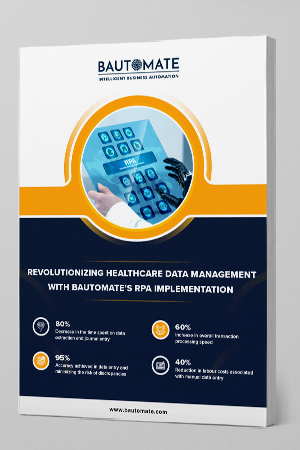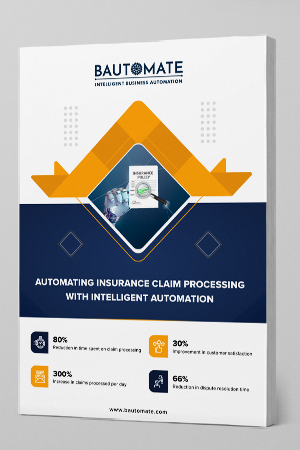
Digital transformation is about bringing agility, accuracy, efficiency, and quick turnaround time. It also helps businesses achieve goals like delivering excellence and services with ease, optimising resources, and shortening timelines. Low-code deployment promises a bright future in which almost anyone can create workflow automation to streamline operations and create a more efficient, productive workplace. Because of its simple and flexible deployment approach, it is being used in a variety of industries such as fintech, healthcare, and manufacturing to create a variety of applications.
According to a Forrester study, 84 percent of enterprises have embraced low-code because of its ability to reduce strain on IT resources, accelerate time-to-market and involve the business in digital asset development. It enables 20 times faster application deployment, with 100% of enterprises receiving ROI from low-code adoption
- At least 60% of occupations have at least 30% of their activities automatable.
- Activities with the highest automation potential include 81% predictable physical activities, 69% data processing, and 64% data collection.
Top reasons why companies need low-code platform/solution
- Less-code, fewer bugs, more quality
- Deploy solution in days not months
- Seamless integration with in-house systems
- High time-to-value ratio
- Real-time business insights
- Multiple pre-built templates and components
- Improved business agility
- Rapid decision-making
- Leverage data and AI services in minutes
Low-code platforms aid in increasing flexibility, speed, and automation

In the current scenario, businesses have resumed operations and are adhering to the government’s ever-changing guidelines to ensure employee and customer safety. Business owners and managers have devised a strategy for rapidly evolving, executing, and optimising their services to meet a variety of business requirements. The transition to hybrid work solutions is assisting businesses in planning, coordinating, and managing their business reopening and resuming service to their customers with a dependable and robust solution.
These solutions are intended to assist businesses in ensuring optimal health and safety standards for their employees and customers by providing timely and accurate information to their leaders, managers, and employees. It is assisting several customers in India in creating a safer work environment by providing adequate customizations and rapid deployments to improve workplace security, employee health, and safety management.
Every organization’s digital transformation journey can be aided by low-code platforms. 64 percent of enterprises using low code have overcome the most difficult digital transformation challenges, such as not being able to deliver business needs quickly, a lack of technological skill, and business process redesign.
Drag-and-drop solutions and low-code capabilities have enabled even inexperienced coding employees to quickly automate processes, allowing organisations to focus on more meaningful tasks that can simplify the process of building software for businesses. By 2025, 70 percent of new enterprise applications will be developed using low-code or no-code technologies in the next 2-3 years.
Low-code to mitigate the shortage of skilled resources.

With the rise of low-code services, the cloud is becoming the focal point of new digital experiences. Low-code cloud platforms will become the dominant computing style in the future. With the change in the operating model, the organisation will shift to a product-oriented operations model, with training required for new roles and responsibilities. According to NASSCOM, the low-code market will generate between USD 4 billion and USD 4.2 billion in revenue by 2025.
One of the largest retail chains in ASIA enabled employees across its business to quickly adapt, improve processes, and uncover insights into operations resulting in increased collaboration, speed, and productivity. By 2025, the use of low-code technologies will nearly triple, giving rise to low-code application platforms and citizen developers capable of building workflows on their own. The social and technological movement toward low-code deployment is expected to grow significantly and remain the largest component of the technology market through 2022, alleviating the shortage of skilled developers.
Make use of citizen developers to unleash power of low-code

With low-code simple, visual interfaces, enable “Citizen Developers”—people with little to no coding experience—to create sophisticated workflows through drag and drop components to form an automated process.
Low-code democratises and streamlines software development by removing the bottlenecks that plague traditional development life cycles by reducing reliance on specialised coding expertise. What could happen? Improved speed, agility, and flexibility, as well as rapid prototyping and “fail fast” capabilities, are critical to a company’s competitive position.
Low-unified code’s platform has assisted businesses in realising their full potential by breaking down data silos, innovating, and lowering costs in order to better connect with customers, products, people, and operations. It also assists organisations in adopting new technology and integrating it into the firm in order to develop its own distinct digital capability and ‘trust factor.’ The demand for low-code adoption has been fueled by the need for cost-effective digital solutions. Because of its high degree of adaptability in creating customised applications, it has become an innovative technology for better coordination among multiple stakeholders while ensuring speed and accuracy.
Low-code is quickly becoming the go-to solution for organisations of all sizes, as it allows for the seamless integration of data and technology. The business world is undoubtedly ready to incorporate low-code deployment into organisation operations. Building digital platforms that address the need to connect processes, people, and data will help improve execution speed and engage people in free-flow ideation, fostering better problem-solving and innovation. True organisational collaboration and digital transformation are dependent on a brand’s ability to build and deliver slow and abandon the use of expensive code-heavy app development tools.
Conclusion
Small and medium-sized businesses can now use business process automation tools thanks to a number of top cloud-based low-code platform providers like Bautomate. Low-code automation should be implemented in all businesses, large and small, because it reduces operating costs and capital expenditures while also resulting in happier and more productive workers.
But before making a decision, think about what will work best for you and your company. If you don’t need a feature, just because an application offers it doesn’t mean it’s a fantastic fit. There isn’t a fix that works for everyone. Therefore, be careful to select the option that best suits you.
We assist businesses in making their processes appear simple. Stay ahead of the competition. Get started now!








































